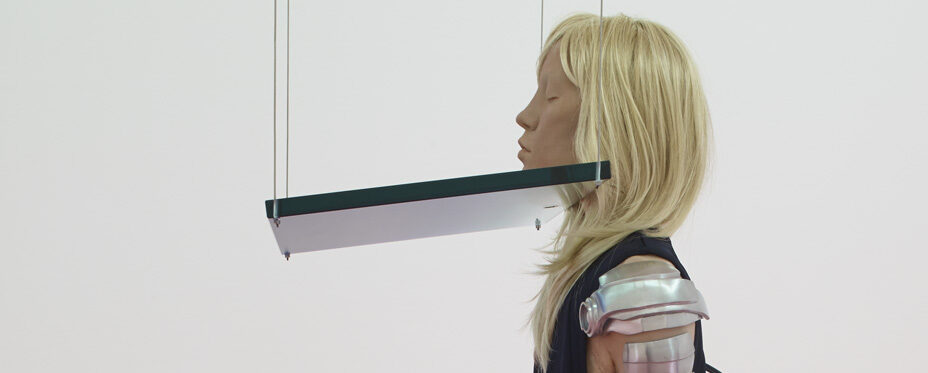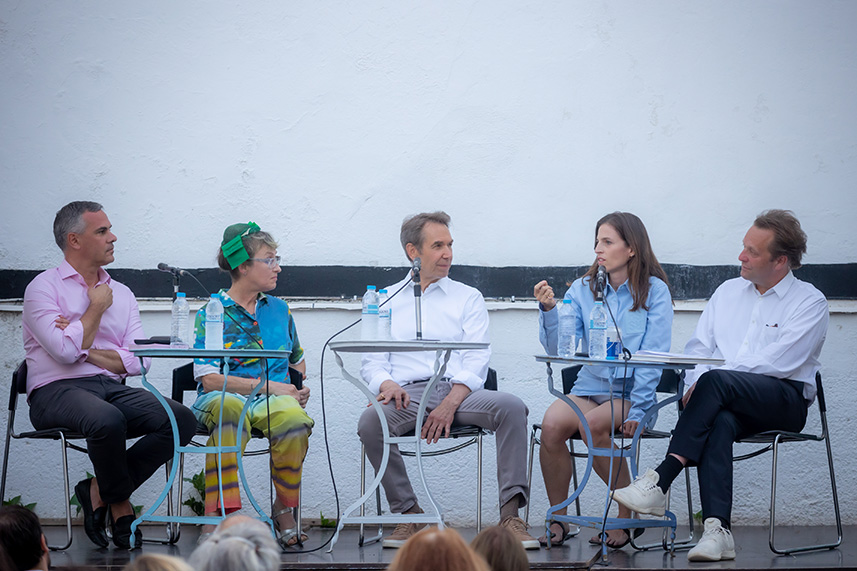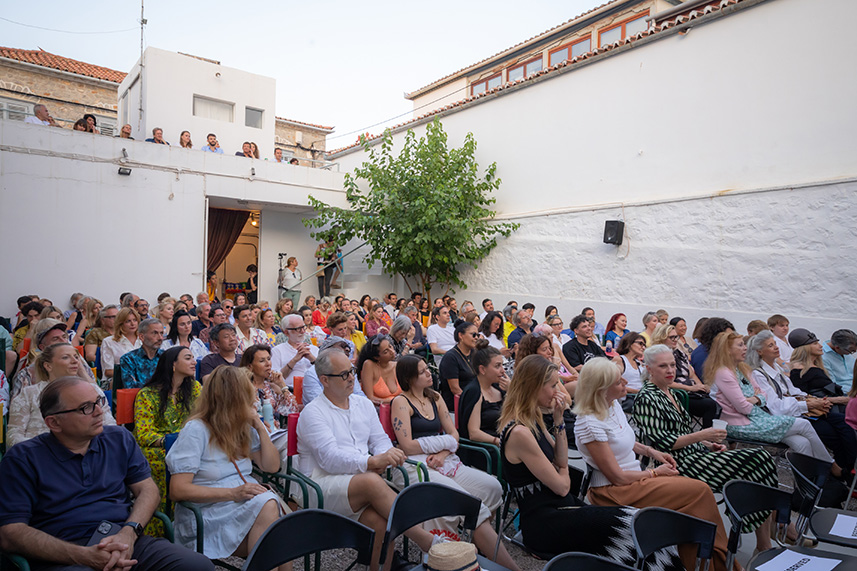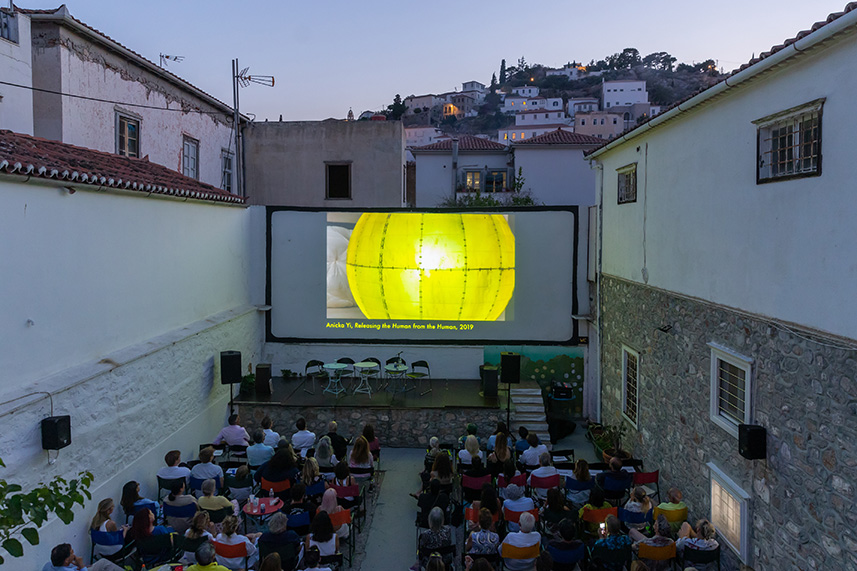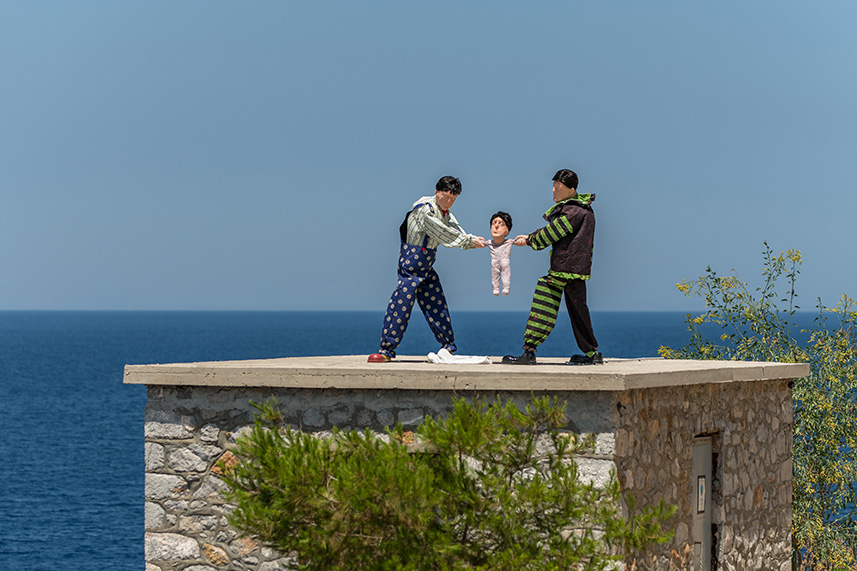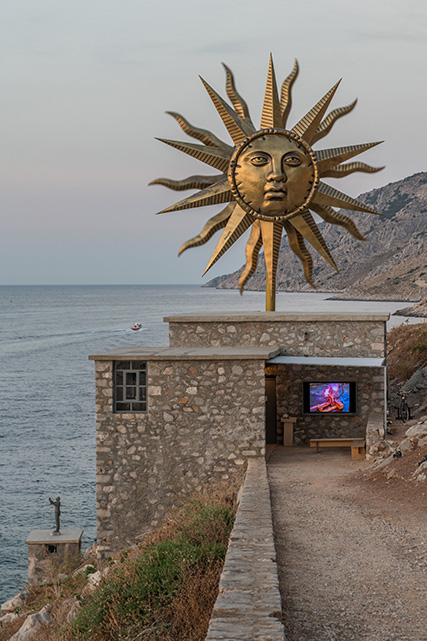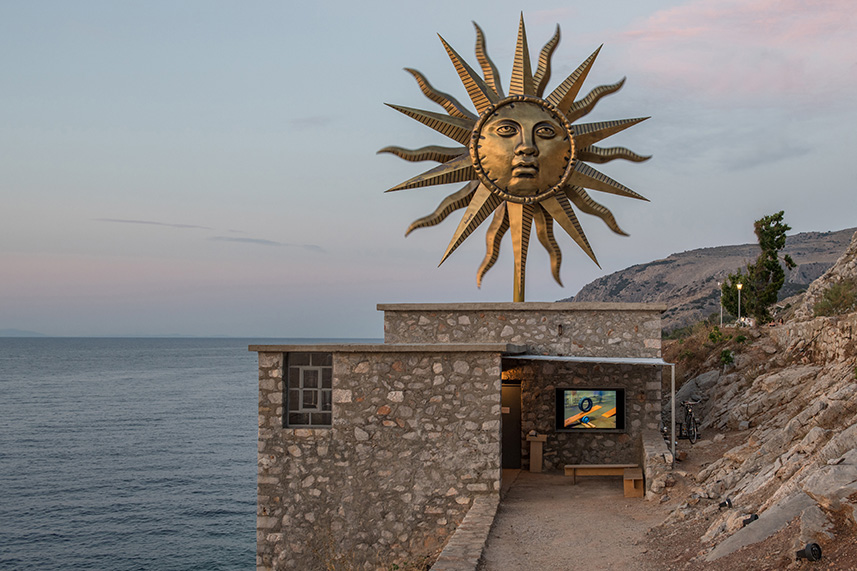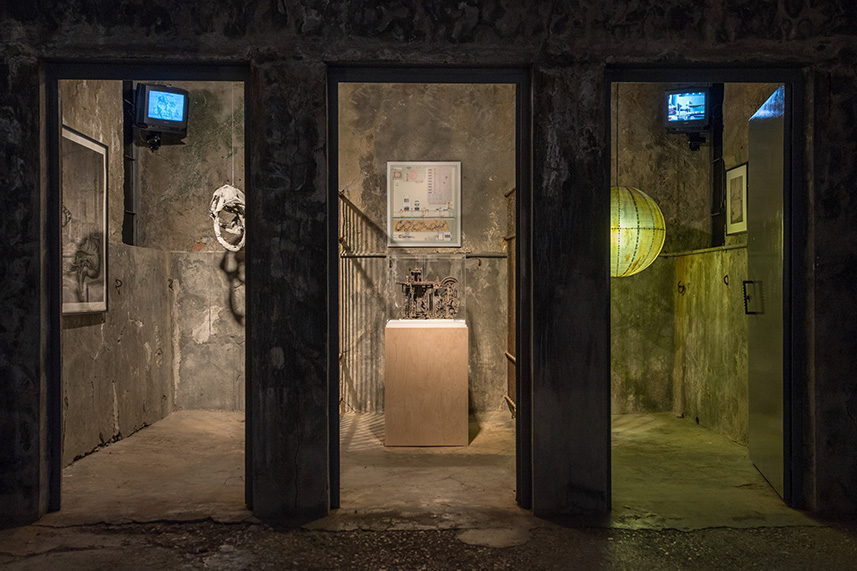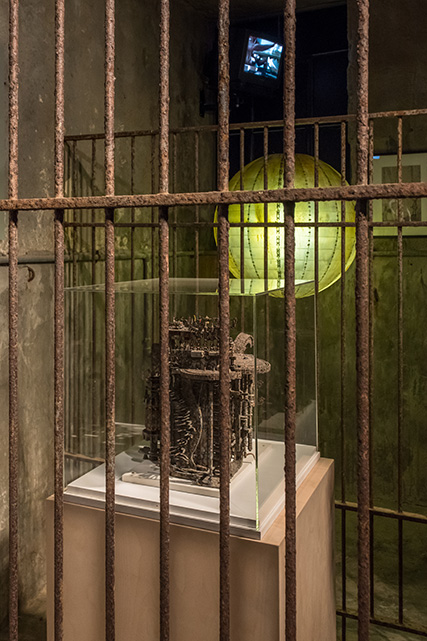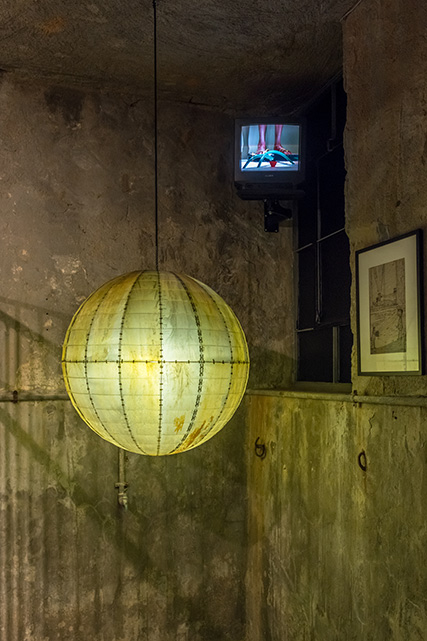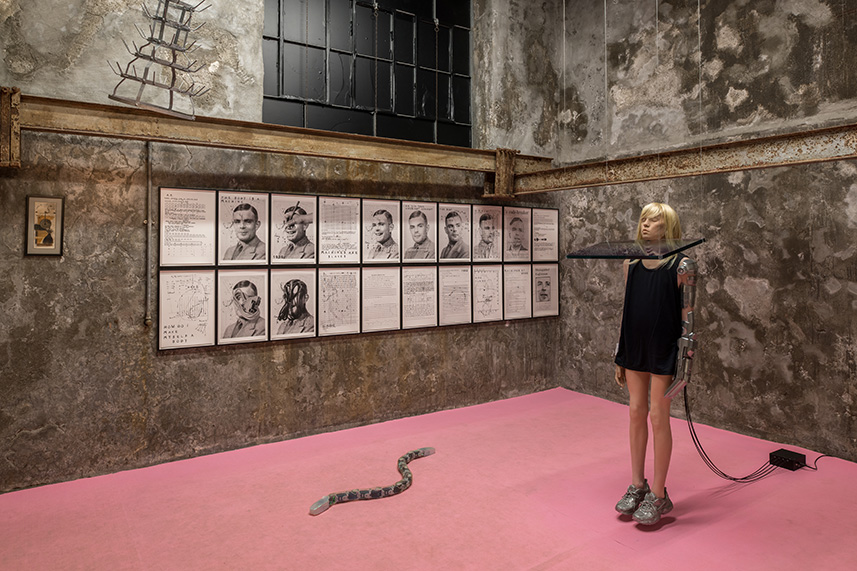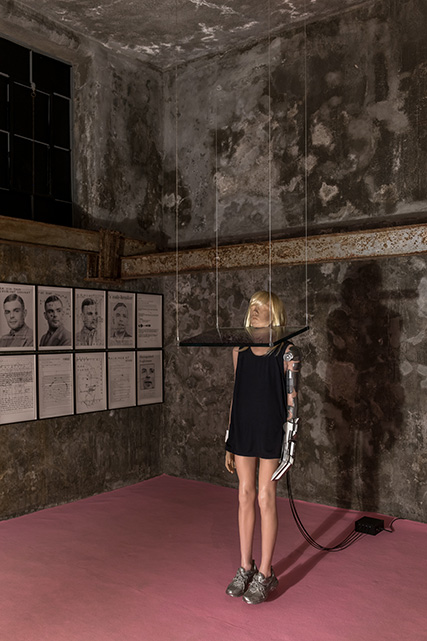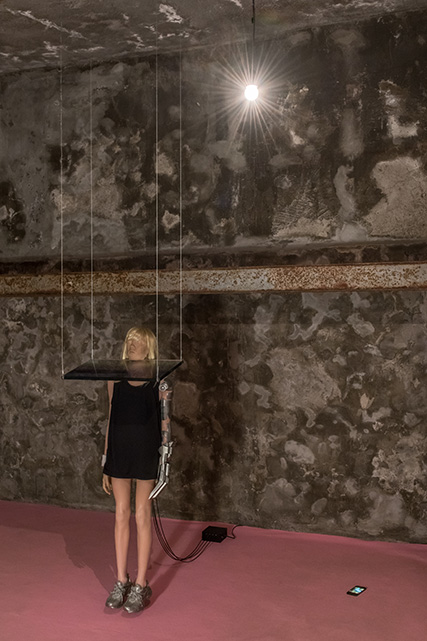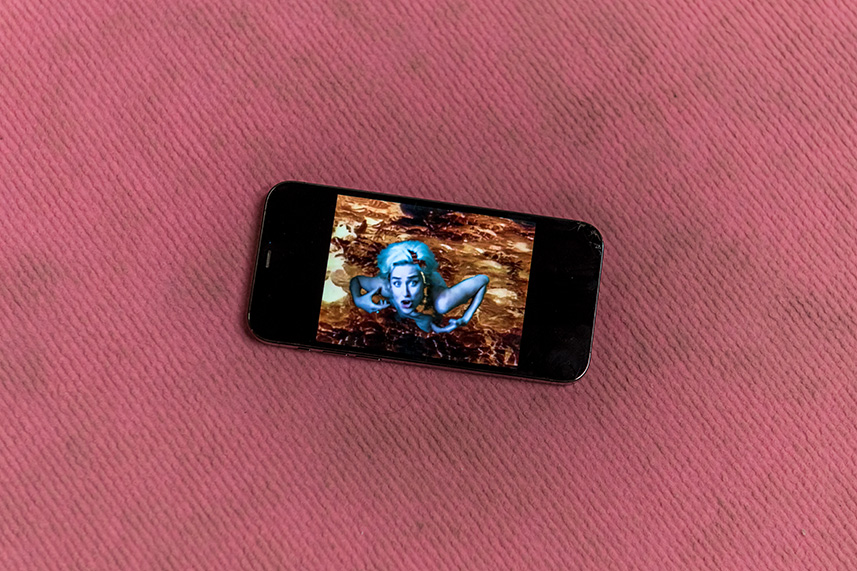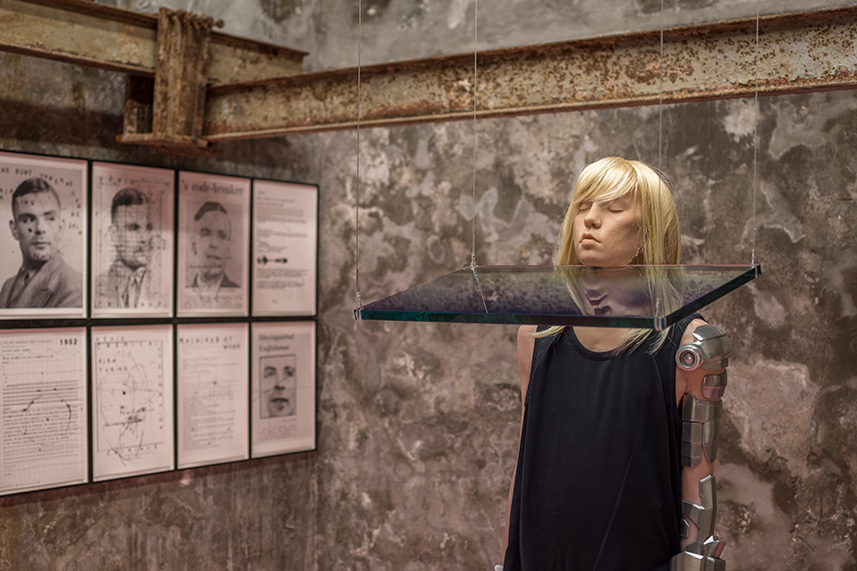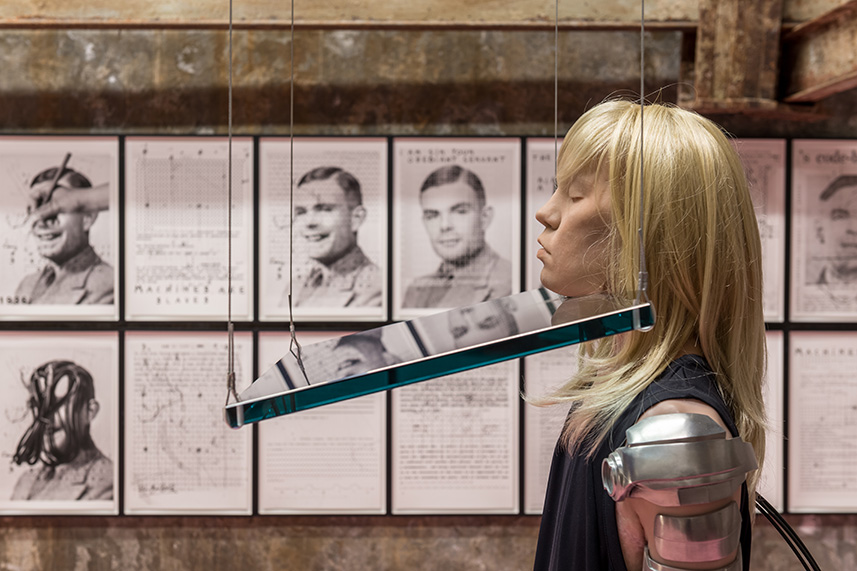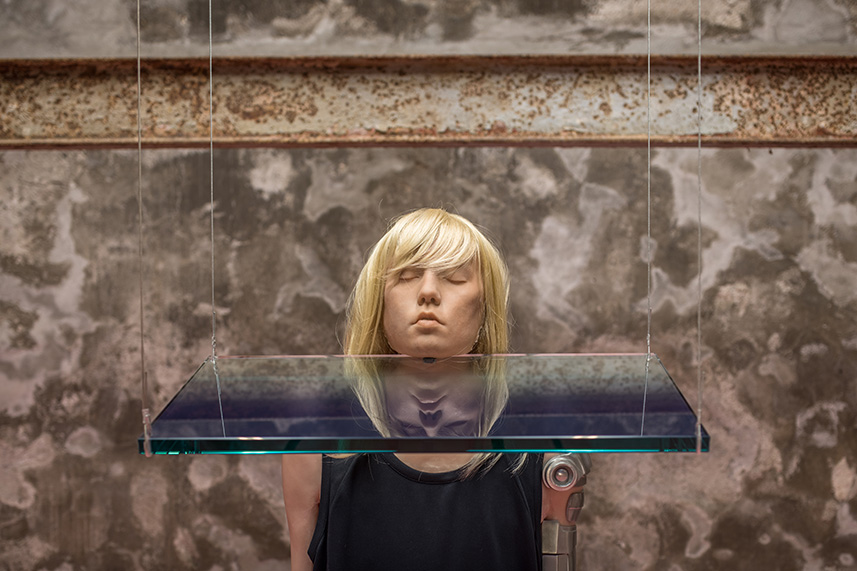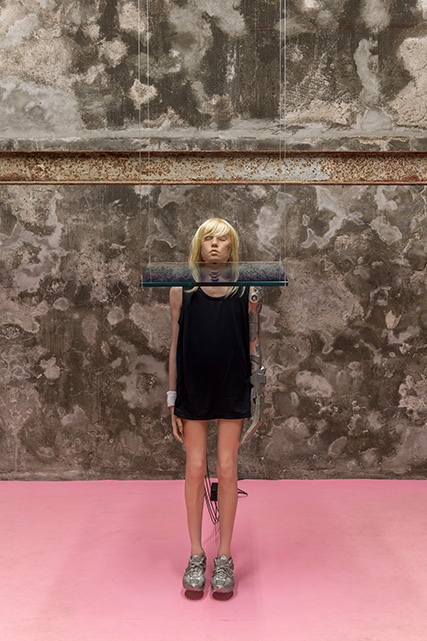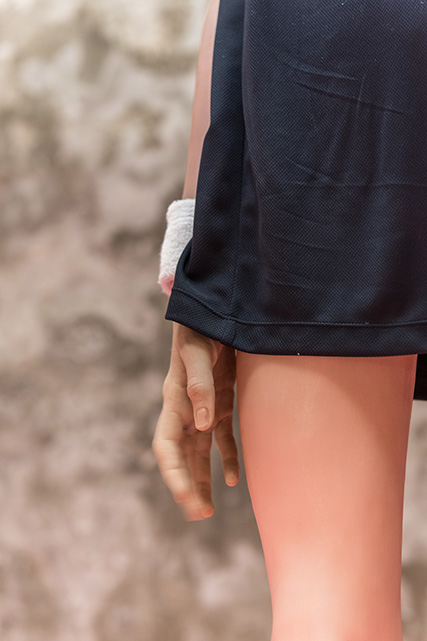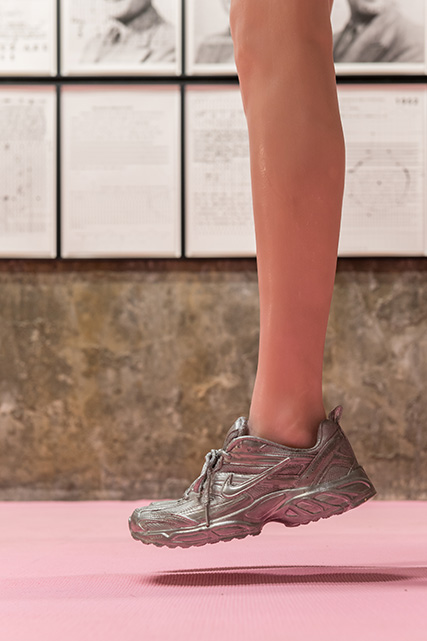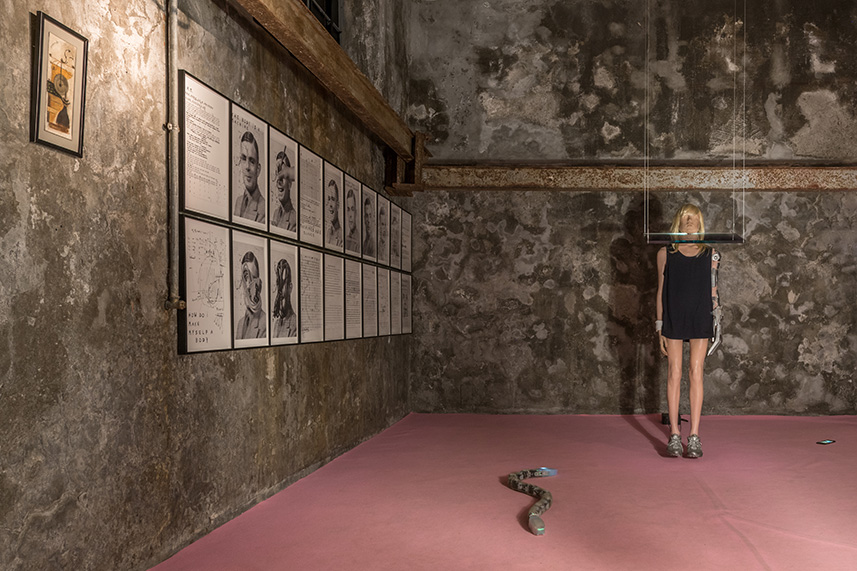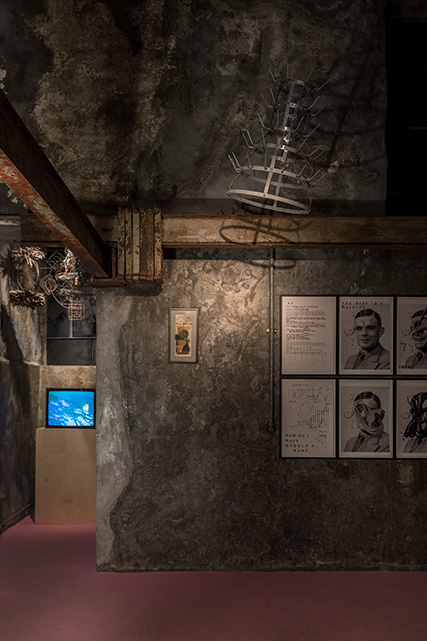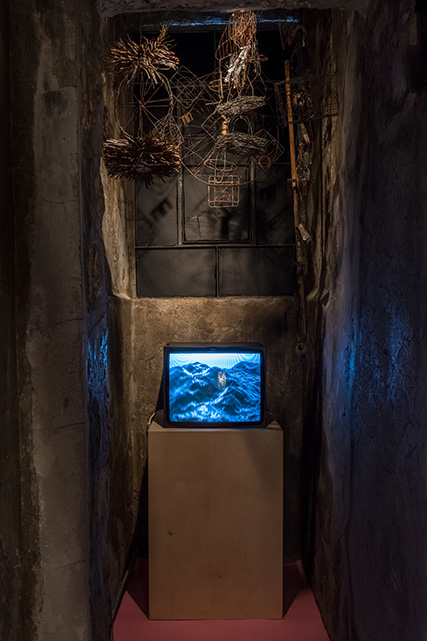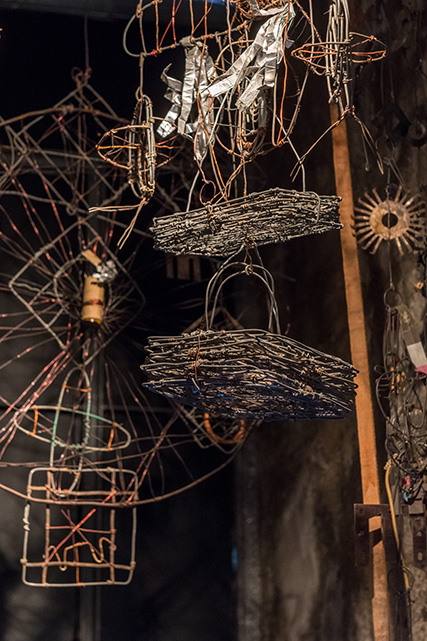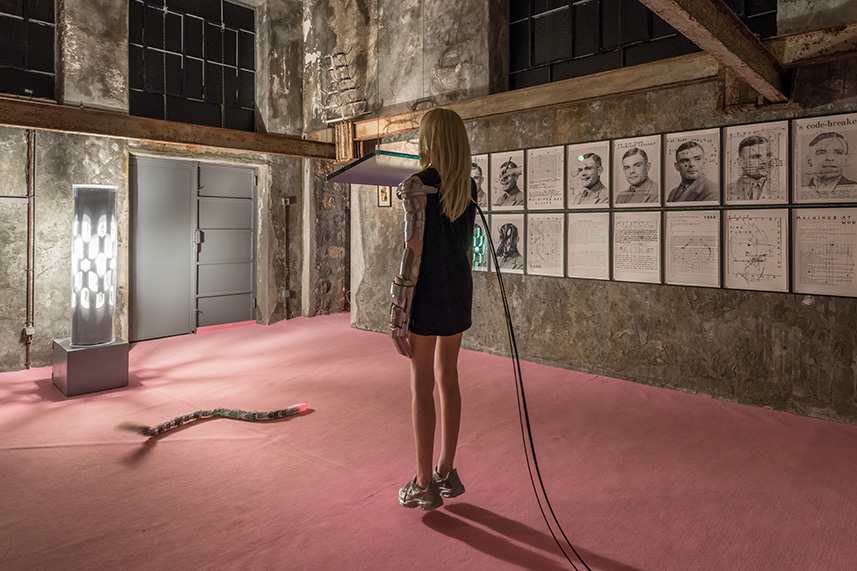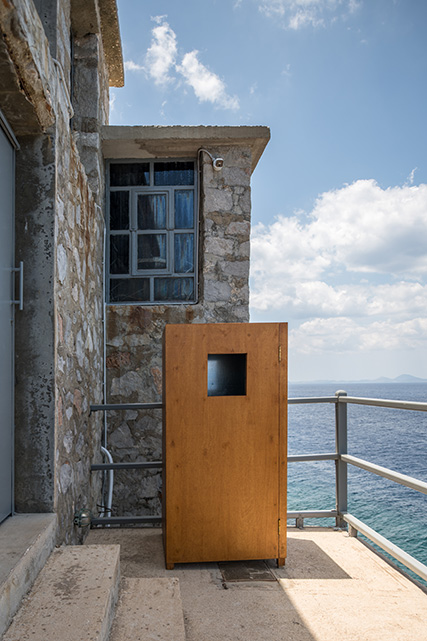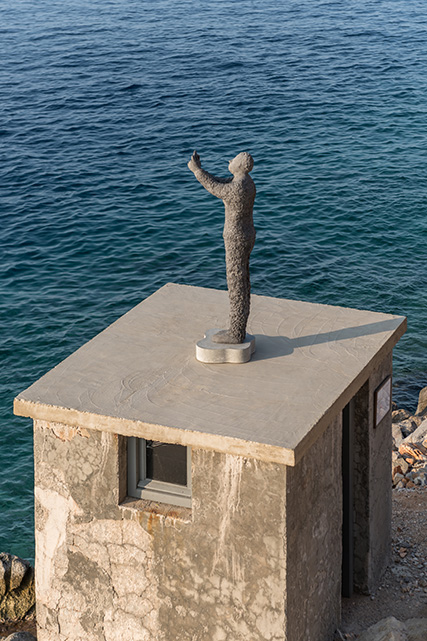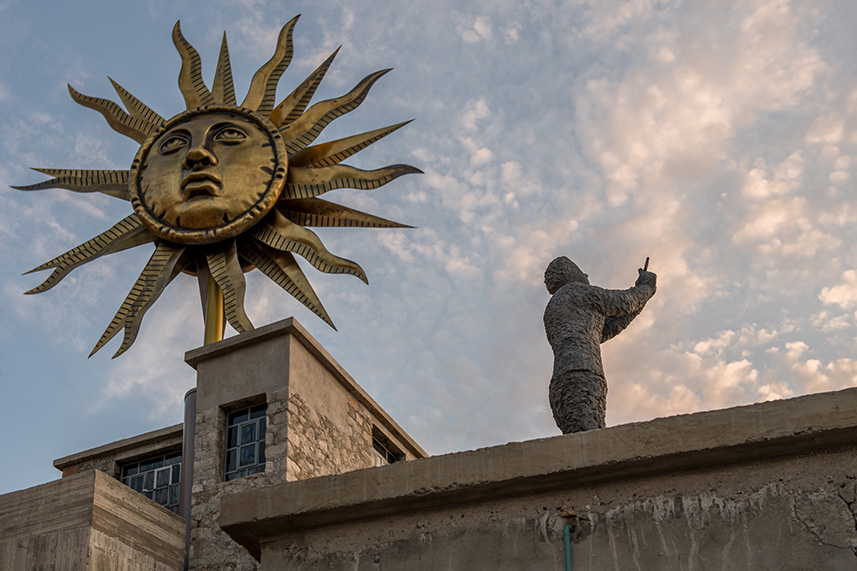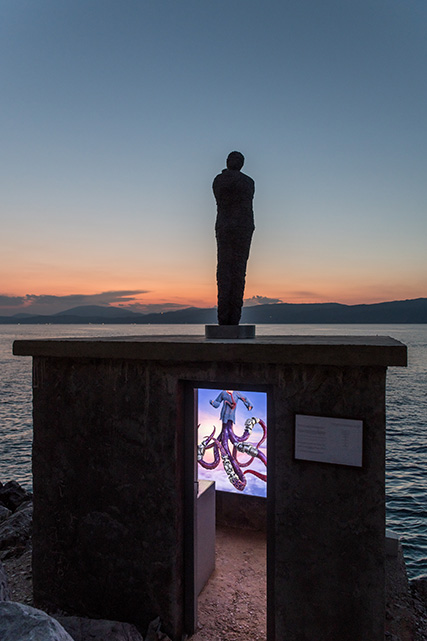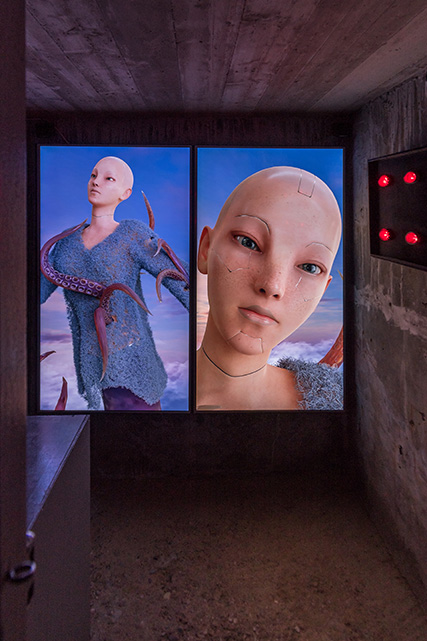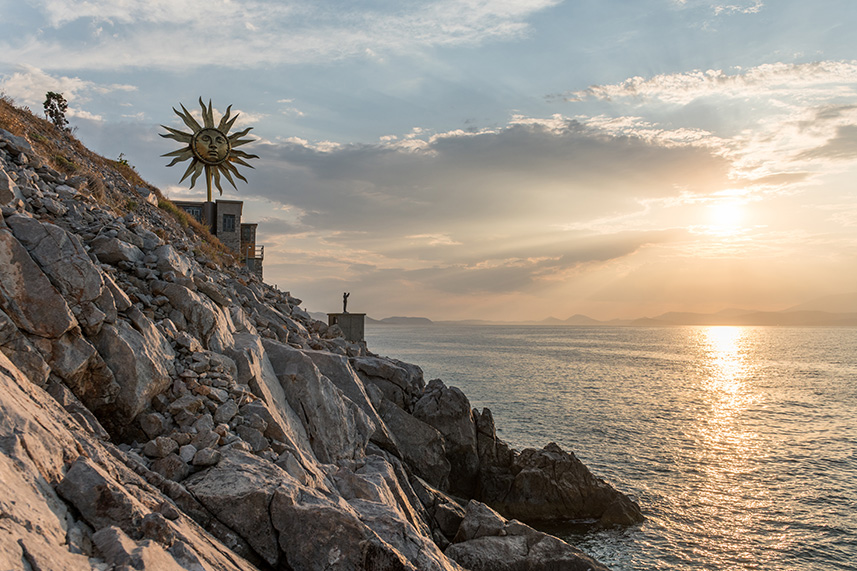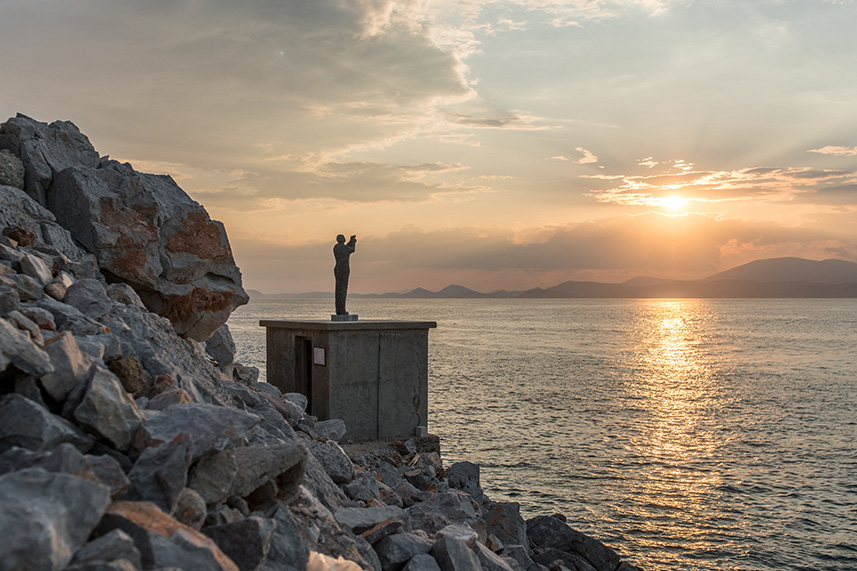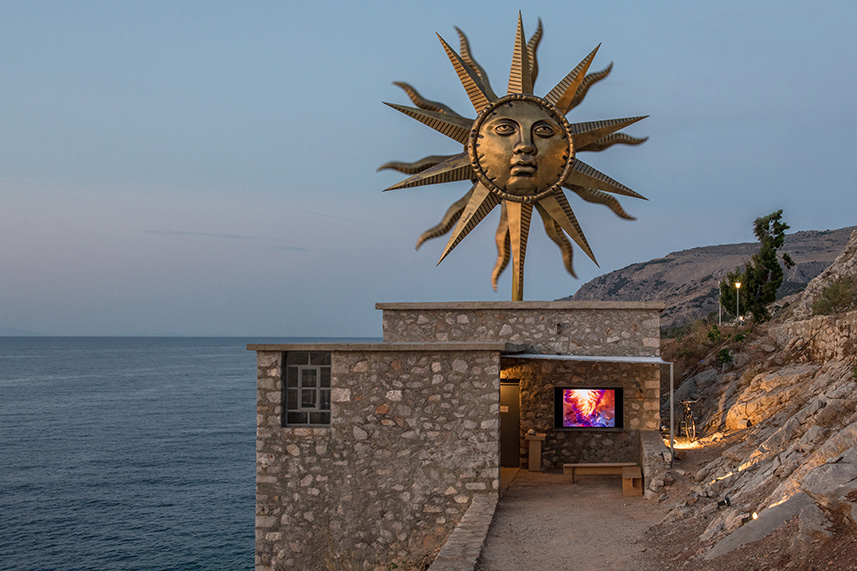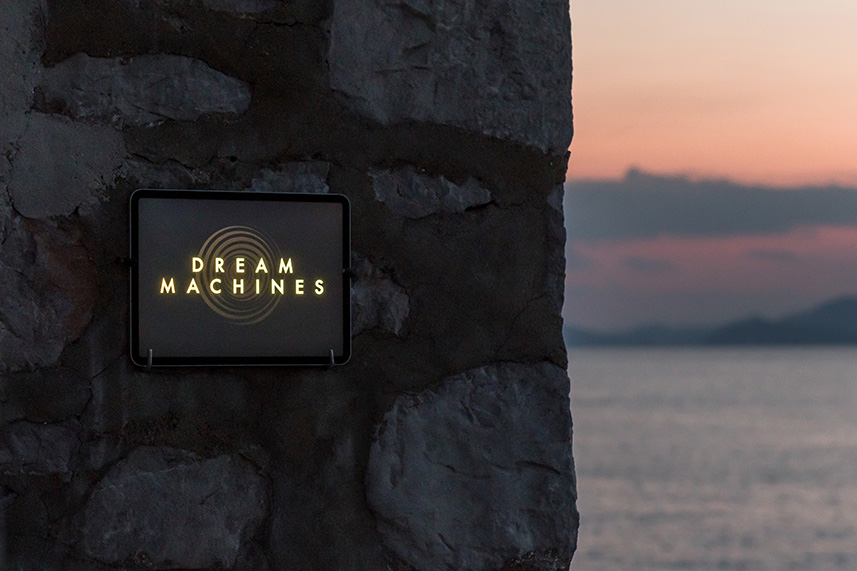NEW OPENING HOURS:
Starting on October 4, the exhibition in Hydra will be open daily, apart from Tuesdays, from 11:00 to 13:00 and from 18:00 to 21:00.
Dream Machines, curated by Daniel Birnbaum and Massimiliano Gioni, is an exhibition that explores the impact of technology on human imagination. It presents a number of momentous works, from Ulf Linde’s reinterpretation of Marcel Duchamp’s Coffee Mill (1911), which was described by André Breton as an infernal machine, to a selection of recent experiments exploring the virtual realm. Installed in and around the cave-like space of the DESTE Slaughterhouse in Hydra, this boîte-en-valise of an exhibition becomes itself a “bachelor machine” (to use Duchamp’s term), its artworks caught in an endless mechanical ballet.
Combining loans from the Dakis Joannou Collection with newly commissioned works, the show features historical figures such as Duchamp and Wilhelm Reich, significant contemporary practitioners, highly celebrated artists such as Jeff Koons, Pipilotti Rist, and Pamela Rosenkranz, as well as a large number of self-taught outsiders.
Essay film-catalogue by Jacqui Davies
Technology creates utopian dreams. It also creates paranoia. Taking its name from Brion Gysin’s legendary 1960s Dreamachine—an invention that in spite of its modesty was believed by many of its users like William S. Burroughs, Kurt Cobain, Allen Ginsberg, Brian Jones, and Paul McCartney, to revolutionize human consciousness—the show revisits moments of both anticipation and distress.
Artists have always embraced new media. And yet one cannot say that the art world’s dominant attitude towards modern technology has been one of sheer enthusiasm, even if the last century saw moments of techno-optimism, from Italian Futurism and Russian Constructivism to the 1960s movement E.A.T. (Experiments in Art and Technology). Key voices of philosophy and critical theory, such as the Frankfurt School’s most somber representatives, including Walter Benjamin and Theodor Adorno, established an attitude of techno-skepticism so fundamental that any form of playful affirmation, let alone enthusiasm, appeared at best naïve. The essence of technological reason, we were told, lies in hegemonic control and totalitarian exploitation of nature. Its distancing effects make it an enemy of more authentic forms of experience, like that of great art.
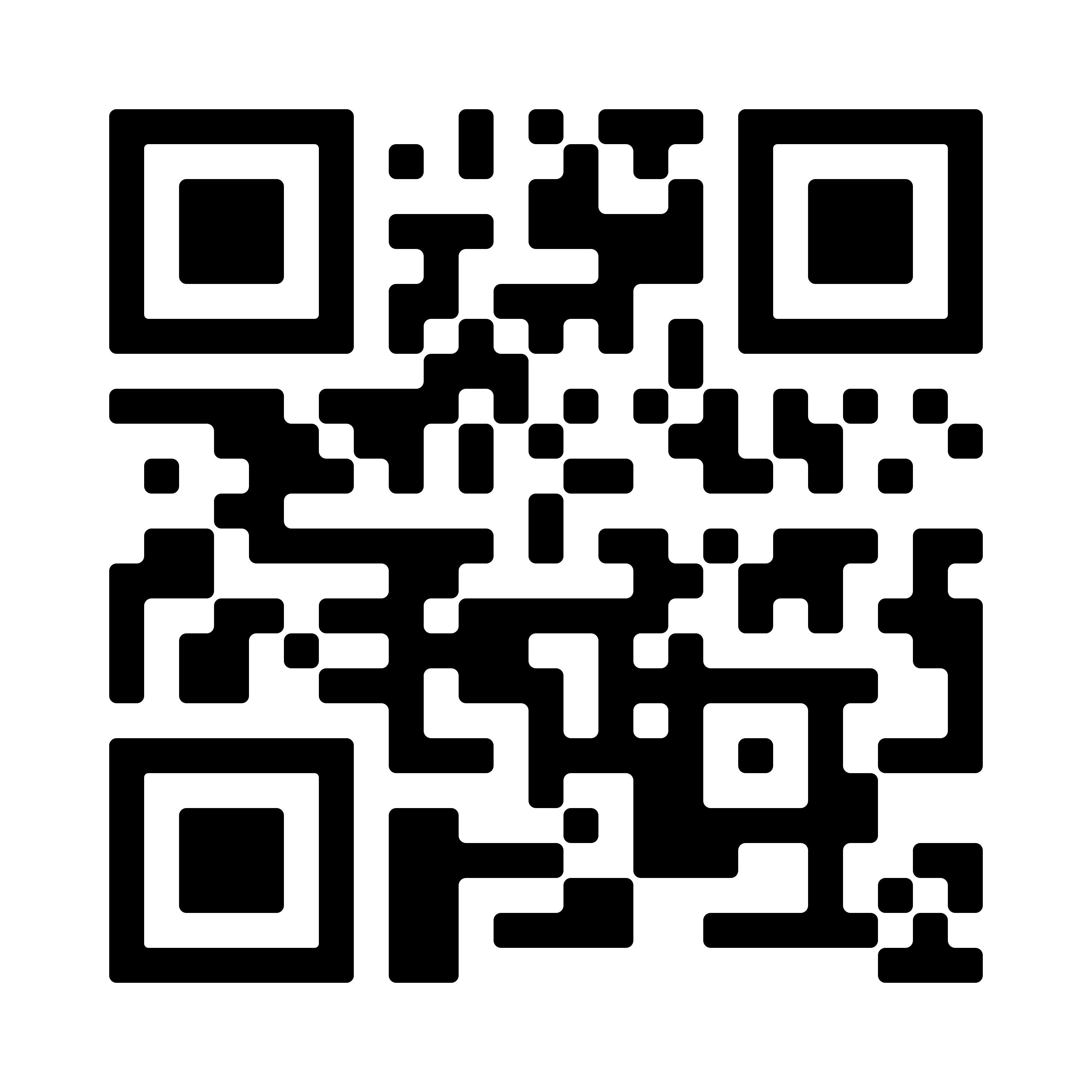 Scan the above QR Code and follow the instructions to view Lee Bul’s “Willing To Be Vulnerable – Metalized Balloon VER.AR22” (2022), produced in collaboration with Acute Art.
Scan the above QR Code and follow the instructions to view Lee Bul’s “Willing To Be Vulnerable – Metalized Balloon VER.AR22” (2022), produced in collaboration with Acute Art.
And yet, at a moment when we can no longer imagine a world without technology, it is vital to ask how we (the inhabitants of this planet) imagine the world and its machines. Photography, film, radio, television, video, the computer, virtual reality, blockchain technology: the introduction of new machineries continuously change the possibilities of artistic expression. It was Benjamin who observed a prophetic capacity in certain works of art that allude to technologies that have not yet been developed. What could be examples of such prophetic power? It has been claimed, for instance, that certain 19th-century novels anticipated cinema—that they are written for a medium that did not exist yet. Emily Brontë’s Wuthering Heights, one could claim, is written like a screenplay. Similarly, the branching narratives of Jorge Luis Borges in certain ways seem to anticipate hypertext fiction. Duchamp’s The Bride Stripped Bare by Her Bachelors, Even (The Large Glass) (1915-1923) has been said to predict the emergence of virtual space. In 1967, John Cage explored how electronic media had extended the human mind beyond the individual and made it social: through technology we have produced an extension of our brains to the world formerly outside of us. The human nervous system is no longer inside but “out there,” where electronic media let us join our friends (and perhaps enemies) in virtual environments.
Half a century later, popular culture and art overflow with fantasies of simulated worlds and virtual spheres, while the corporate tech avant-garde launches optical instruments that promise no less futuristic electric dreams. One of today’s most vociferous techno-optimists, Ray Kurzweil, believes that a few years from now virtual reality will be totally realistic and compelling and that we will spend most of our time in virtual environments. The ever-accelerating progress of technology will, according to Kurzweil, culminate in the Singularity, the almost vertical phase of exponential growth when technology seems to be expanding at infinite speed—a disruptive moment of total transformation, in which machines will theoretically become sentient and more intelligent than humans.
Against this messianic anticipation of the entire planet becoming an intelligent machine, critics of cognitive capitalism scrutinize how today’s digital technologies form the foundation of a surveillance economy that makes possible the expropriation of critical human rights. Is it necessary to establish new zones of creative friction? Should artists in the future celebrate emerging technologies, or should they be part of a new resistance?
Clearly technology itself does not have the answer. Asked this question, ChatGPT’s Open AI responds in a characteristically pointless way:
“Ultimately, it’s up to each individual artist to decide whether they want to celebrate emerging technologies or resist them. Both approaches can be valid and can lead to interesting and thought-provoking art.”
***
Within the framework of Dream Machines, the DESTE Foundation organized “Of Gods and Dreams”, a conversation with Jeff Koons, Pipilotti Rist, and Pamela Rosenkranz, moderated by the exhibition’s curators, Daniel Birnbaum and Massimiliano Gioni. The talk, which took place at Hydra’s open-air cinema, touched upon issues of art and technology.
Stay tuned as we will soon be uploading the audio from the conversation.
________________________________________________________________________________
Featured image: Andro Wekua, Untitled, 2014 (detail) | Courtesy of the artist
